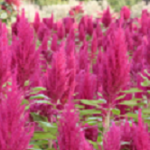When I bought a serving of raw amaranth in bulk, I took a photo of the cooking directions on the bulk bin.
One day last week I double checked the amount of grain I had against the recipe to make sure I used the correct proportion of grain to water. Then I followed the directions to cook it for breakfast. Think of oats or cream of wheat for a general idea of the finished dish. As promised, the taste is nutty but not sweet. I ate it with raisins and determined some kind of fruit is a good addition. Would I make this again? Probably not, as I prefer and am more familiar with oats or cracked wheat.
Amaranth first came to my attention several years ago when I was writing a series of nutrition and fitness books for elementary school classroom use. At the same time, I was finishing a novel about WWII Navajo code talkers. My story focuses on code talker recruitment and training before they went overseas.
Amaranthus L. (common name Pigweed) was a common food among natives in the early 1940s. 
Research showed there were several ways of preparing and eating this ancient grain.
*Boil the seeds with tallow and eat or use to feed sheep.
*Grind the seeds, mix with corn flour, and make into bread.
*Thresh the seeds and make into dough, then bake in ashes.
*Grind the seeds and cook into a mush with goat’s milk.
*Boil the greens or fry them in grease.
During my research, I read something about edible parts of cactus. My sons tell me we tried the leaves once, but I don’t recall.
Our food adventures this week have been more tame —
*raw beet from my son’s garden, shredded on salad
*garden cucumber, pickled in apple cider vinegar
*pears from my son’s tree, sliced to enjoy their delicious flavor
Early this week I’ll pick blackberries with a friend. Already looking forward to that cobbler!
What are some of your favorite garden / fresh foods this time of year?

